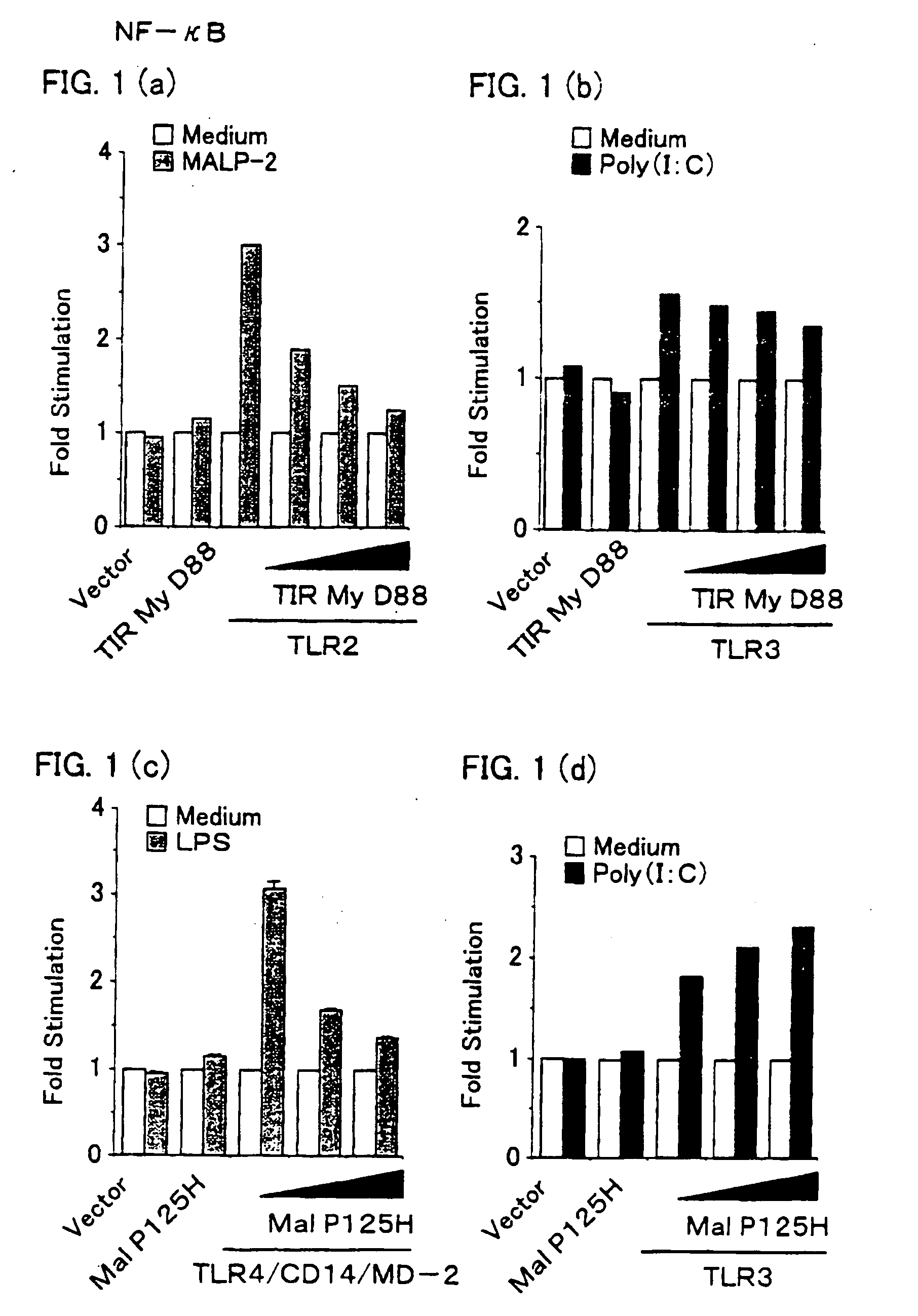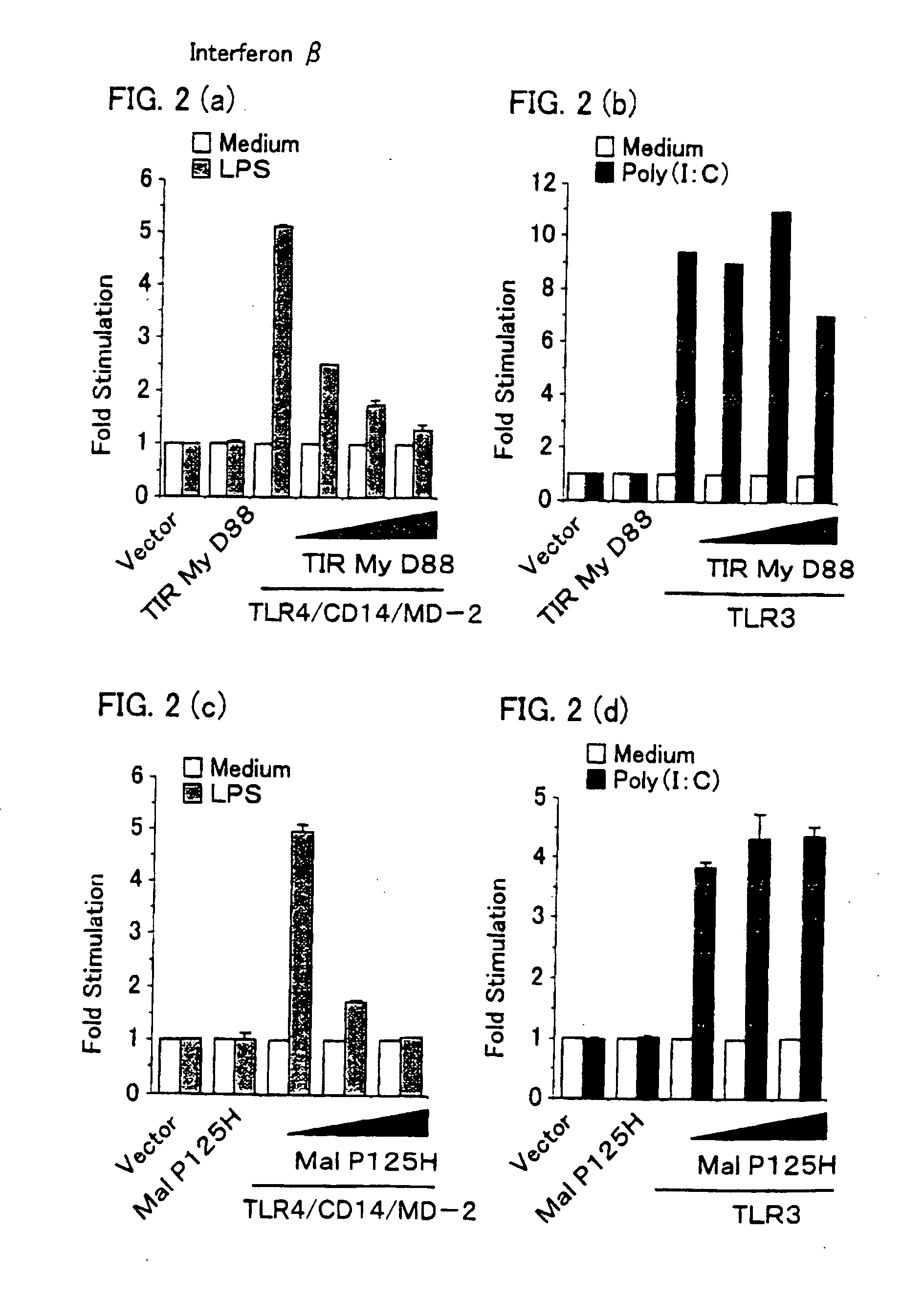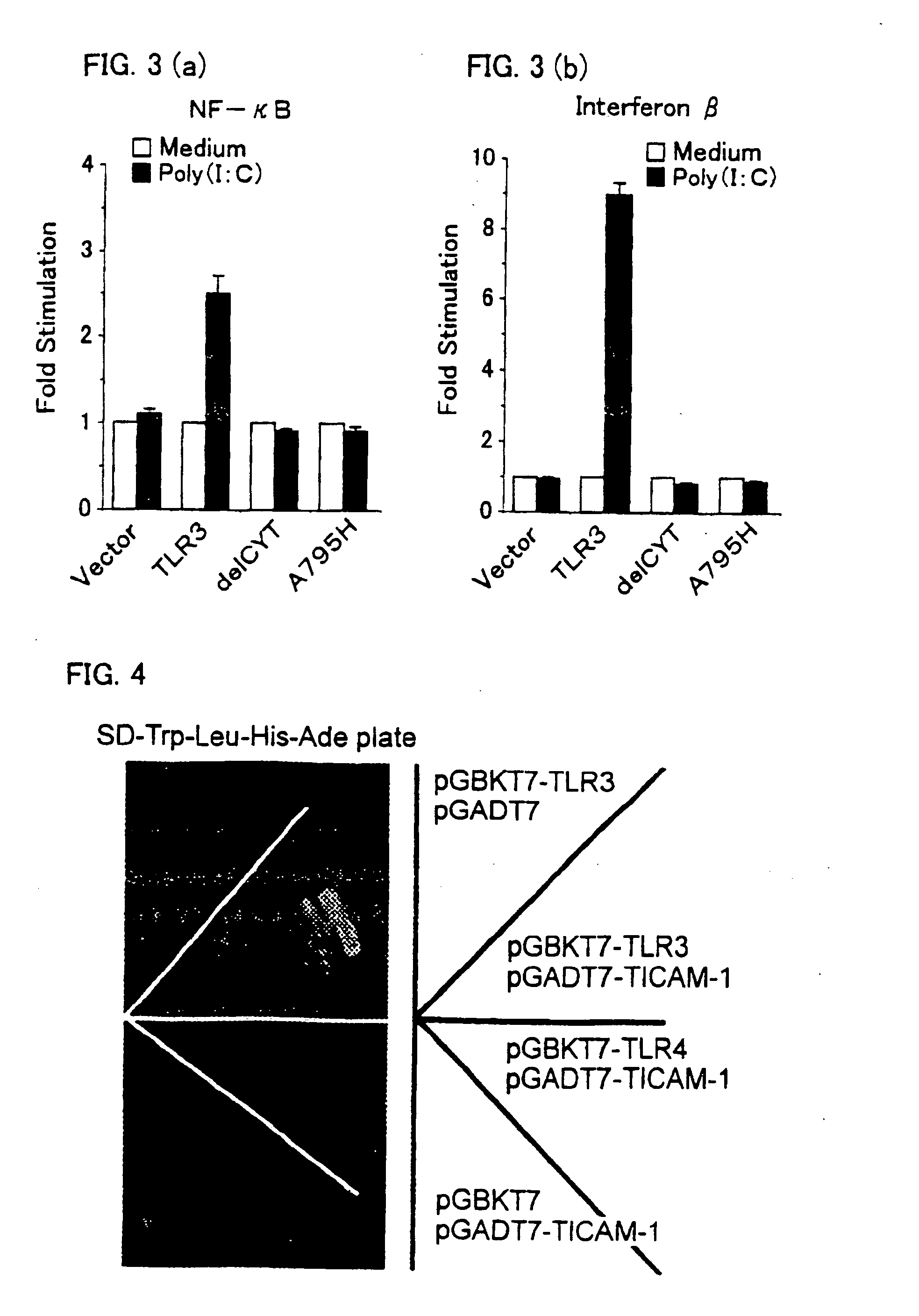Novel adaptor protein binding to mammalian toll-like receptor 3, and gene thereof
a technology of adaptor protein and toll-like receptor, which is applied in the introduction of vector-based foreign material, peptide/protein ingredients, depsipeptides, etc., can solve the problem that the anti-cancer effect of interferon formulations is difficult to maintain, and the signaling pathway is not understood. problem, to achieve the effect of enhancing the mammalian type i interferon production, enhancing the mammalian typ
- Summary
- Abstract
- Description
- Claims
- Application Information
AI Technical Summary
Benefits of technology
Problems solved by technology
Method used
Image
Examples
example 1
[0155] Investigated here was whether, as a result of HEK293 cell transfection, human TLR3 perform signaling mediated by the adaptor molecule MyD88 or Mal / TIRAP in response to poly (I:C) analogous to double-stranded RNA.
[0156] Firstly, reporter gene assay was performed to find level of NF-κB activation.
[0157] HEK (human embryo kidney) 293 cells (2×105 cells per well) were transiently transfected in 24-well plates using gene transfecting cationic lipid “Lpofectamine 2000” reagent (made by Gibco), with a luciferase-linked NF-κB reporter gene (made by Stratagene, 0,1 μg), together with the followings: (1) empty vector, (2) TIRMyD88 expression Vector (0.2 μg), (3) TIRMyD88 expression vector (0, 0.05 μg, 0.2 μg, or 0.6 μg) and human TLR2 expression vector (0.1 μg), (4) empty vector, (5) TIRMyD88 expression vector (0.2 μg), (6) TIRMyD88 expression vector (0, 0.05 μg, 0.2 μg, or 0.6 μg) and human TLR3 expression vector (0.1 μg), (7) empty vector, (8) MalP125H expressio...
example 2
[0170] HEK (human embryo kidney) 293 cells (2×105 cells per well) were transiently transfected in 24-well plates using gene transfecting cationic lipid “Lipofectamine 2000” reagent (made by Gibco), with a luciferase-linked NF-κB reporter gene (made by Stratagene, 0,1 μg), together with the followings: empty vector, human TLR3 expression vector (0.1 μg), human TLR3delCYT expression vector (0.1 μg), or human TLR3A795H expression vector (0.1 μg).
[0171] Twenty four hours after the transfection, the transfected cells (1) to (3) were stimulated for 6 hours with medium alone or with poly (I:C) treated with polymyxin B. Then, the cells were lysed with the lysis buffer (made by Promega). Luciferase activities in thus prepared lysates were measured. Measurement values were representative of three independent experiments.
[0172] The measurement values of the luciferase activities of the cells stimulated after the transfection are illustrated in black in FIGS. 3(a) and 3(b)...
example 3
Screening and Identification of Novel Adaptor Molecule
[0176] A yeast two-hybrid system showed that a tail of TLR3 was specifically associated with a certain protein (c.f. FIG. 4).
[0177] Next, to identify an adaptor molecule for human TLR 3 signaling, screening was performed by using the yeast two-hybrid system.
[0178] The screening of the novel adaptor molecule that specifically binds to TIR domain of human TLR3 was carried out by using a yeast two-hybrid system “Matchmaker two-hybrid system 3” (made by Clontech) so as to search, through a cDNA library, a protein that interacts with the TIR domain of human TLR3.
[0179] Firstly, into multicloning sites of a plasmid vector pGBKT7 (made by Clontech), which was a fusion vector of DNA binding domain of a transcription factor GAL4, cDNA encoding the TIR domain of human TLR3 and cDNA encoding the TIR domain of human TLR 4 were respectively inserted, thereby to prepare plasmid vector pGBKT7-TLR3 and plasmid vector pGBKT7-TLR4, as bait pla...
PUM
| Property | Measurement | Unit |
|---|---|---|
| resistance | aaaaa | aaaaa |
| therapeutic concentrations | aaaaa | aaaaa |
| therapeutic concentration | aaaaa | aaaaa |
Abstract
Description
Claims
Application Information
 Login to View More
Login to View More - R&D
- Intellectual Property
- Life Sciences
- Materials
- Tech Scout
- Unparalleled Data Quality
- Higher Quality Content
- 60% Fewer Hallucinations
Browse by: Latest US Patents, China's latest patents, Technical Efficacy Thesaurus, Application Domain, Technology Topic, Popular Technical Reports.
© 2025 PatSnap. All rights reserved.Legal|Privacy policy|Modern Slavery Act Transparency Statement|Sitemap|About US| Contact US: help@patsnap.com



